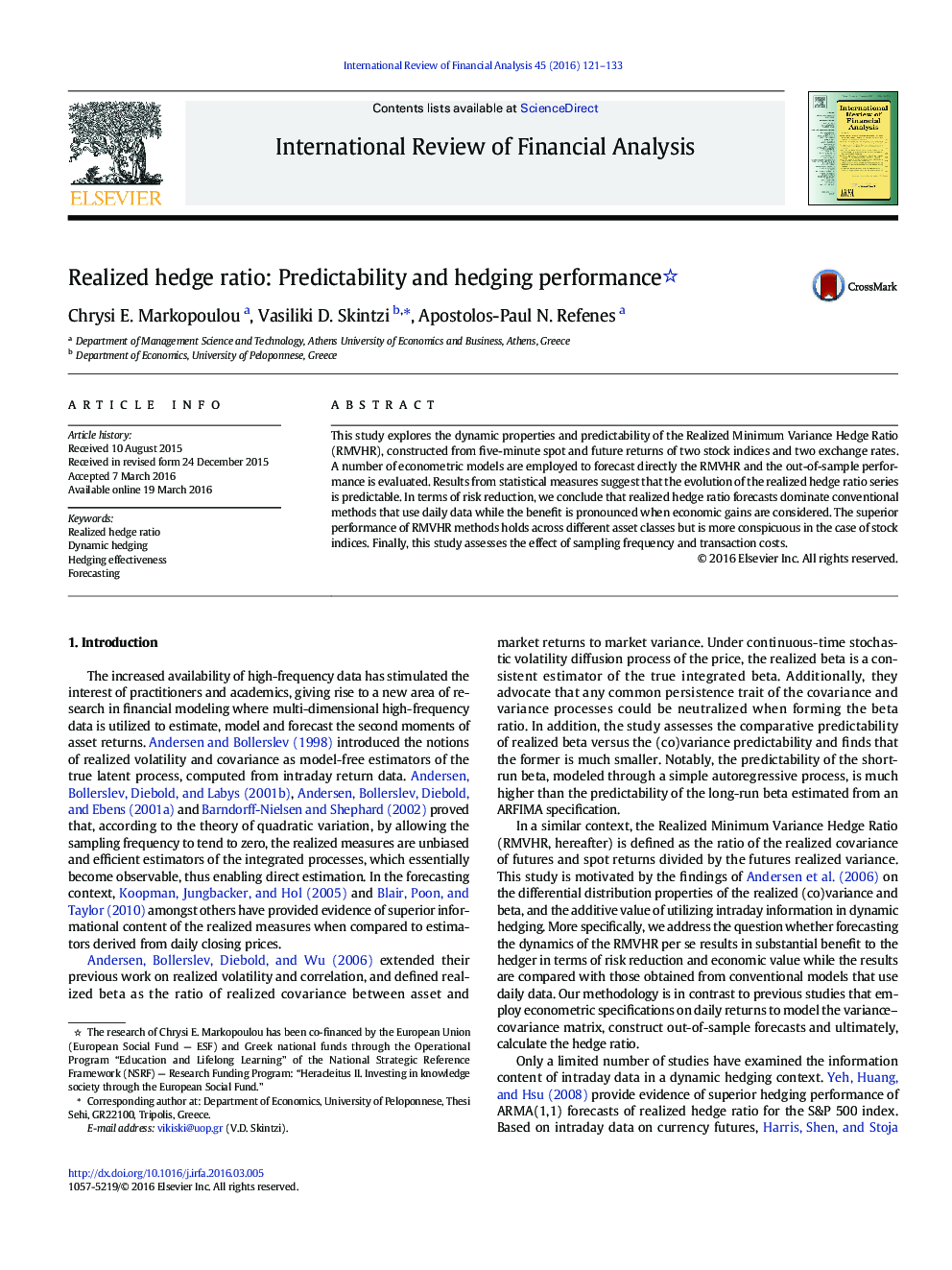| Article ID | Journal | Published Year | Pages | File Type |
|---|---|---|---|---|
| 5084473 | International Review of Financial Analysis | 2016 | 13 Pages |
Abstract
This study explores the dynamic properties and predictability of the Realized Minimum Variance Hedge Ratio (RMVHR), constructed from five-minute spot and future returns of two stock indices and two exchange rates. A number of econometric models are employed to forecast directly the RMVHR and the out-of-sample performance is evaluated. Results from statistical measures suggest that the evolution of the realized hedge ratio series is predictable. In terms of risk reduction, we conclude that realized hedge ratio forecasts dominate conventional methods that use daily data while the benefit is pronounced when economic gains are considered. The superior performance of RMVHR methods holds across different asset classes but is more conspicuous in the case of stock indices. Finally, this study assesses the effect of sampling frequency and transaction costs.
Related Topics
Social Sciences and Humanities
Economics, Econometrics and Finance
Economics and Econometrics
Authors
Chrysi E. Markopoulou, Vasiliki D. Skintzi, Apostolos-Paul N. Refenes,
